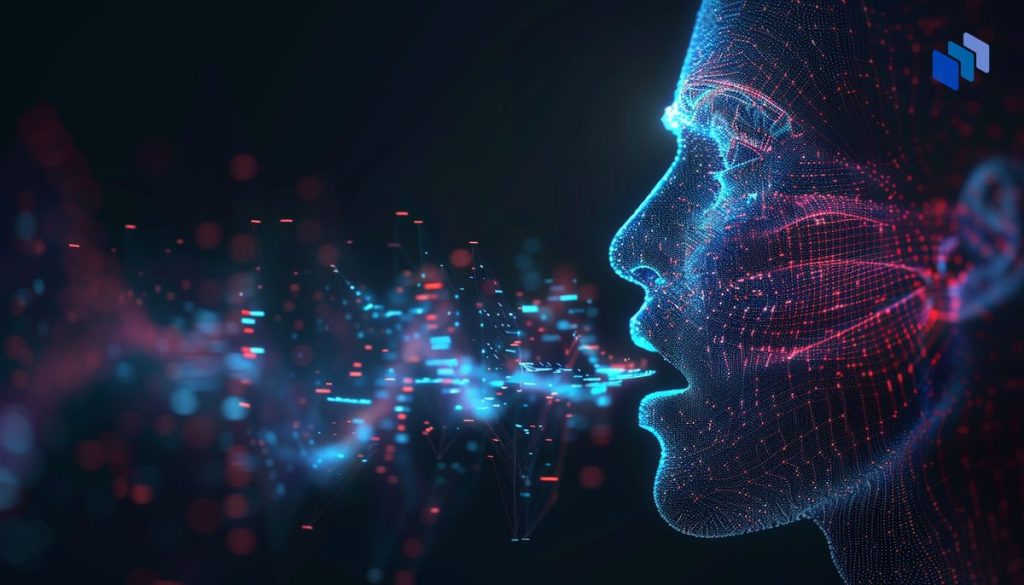In today’s digital age, technology has advanced to the point where it can replicate human capabilities in many aspects. One of these advancements is in the world of voice acting. With the rise of artificial intelligence (AI), we now have the capability to create human-like voices from text, known as AI voice acting. This incredible technology has opened up new possibilities for various industries, from film to advertising, audiobooks to games, and even voice assistants. In this article, we will dive into the world of AI voice acting, learn about its capabilities, challenges, and how to use it easily.
What is AI Voice Acting?
AI voice acting is a technology that uses artificial intelligence to generate human-like voices from text input. It involves analyzing vast amounts of audio data, including different voices, tones, emotions, and languages, to create unique and realistic sounding voices. This technology has been made possible by advancements in machine learning and natural language processing.
AI voice acting works by breaking down text input into smaller components, such as words and sentences, and then using algorithms to create a synthesized voice that is similar to a human one. It can also adapt to different languages and accents, making it a versatile tool for various applications.
The capabilities of AI voice acting are continuously evolving as the technology advances. One of its main strengths is creating diverse voices suitable for a wide range of applications, such as film, advertising, audiobooks, games, and voice assistants.

The definition of AI Voice Acting
Benefits of AI Voice Acting
Enhancing Content with Diverse Voices
In today’s fast-paced digital world, videos and other forms of visual content are becoming more popular. However, adding an auditory dimension to these videos can significantly enhance their impact. With AI voice acting, creators have access to a wide range of voices, including different genders, ages, and accents. This diversity adds depth and personality to the content, making it more engaging for viewers.
Moreover, AI voice acting allows for quick and easy changes to be made to the voice in post-production. For example, if a character in a video needs a different accent or tone, this can easily be achieved without having to re-record the entire dialogue.
Time Efficiency and Cost Savings
Traditionally, voice acting involved hiring human actors, recording them in a studio, and then editing the audio. This process could be time-consuming and expensive, especially for longer projects. However, with AI voice acting, the entire process is streamlined, enabling quick and affordable production.
Additionally, AI voice acting eliminates the need for script memorization, pronunciation errors, and recording delays. This not only saves time but also reduces the chances of mistakes and retakes, reducing overall costs.
Ideal for Short-form Videos
Short-form videos, such as those found on social media platforms, have become increasingly popular in recent years. These videos often require quick and efficient production, making them ideal for AI voice acting. With its time-saving and cost-effective capabilities, AI voice acting is a perfect fit for the current trend of short-form videos.

The pros of AI Voice Acting
How to Create AI Voices
Creating AI voices requires specific tools and steps. There are various platform options available for creating AI voices, such as Typecast, TTSFree, FPT, AI, and more. Each platform may have different features and pricing options, so it is essential to research and find the best fit for your needs.
The following are the general steps to create AI voices:
- Prepare Script: Before you can create an AI voice, you need to have a script. You can either use AI-generated scripts from platforms like ChatGPT, Bing AI, Gemini, Monica, or write your own.
- Choose Software: Once you have a script, you need to choose the right software for generating the AI voice. Some popular options include Text to Speech or Chuyển đổi văn bản thành giọng nói. These tools allow you to input your script and select from a variety of voices and languages.
- Input Script: After selecting the software, you can input your script and make adjustments to the voice, tone, and language as needed. Once you are satisfied with the settings, click on the “Convert” or “Generate” button to create the AI voice.
- Download MP3 File: After the conversion is complete, you can download the MP3 file of your AI voice. This file can then be used in your project or edited further.
- Edit the Audio: Finally, you can use audio editing tools like Capcut PC, Adobe Premiere, or Audacity to edit the AI voice as needed. This step allows for fine-tuning and adding any additional effects to the voice.
Challenges of AI Voice Acting
While AI voice acting has many benefits, it also comes with its challenges. Some of the main challenges include limitations in voice quality, creativity constraints, and the potential for future advancements.

Challenges of AI Voice Acting
Limitations in Voice Quality
One of the most significant challenges of AI voice acting is the voice quality. While AI voices have come a long way, they can still sound robotic and lack naturalness, emotion, and individuality. This can be a problem for projects that require a high level of realism and authenticity.
However, as technology and data continue to improve, we can expect AI voices to become more realistic and natural sounding in the future.
Creativity Constraints
Another challenge of AI voice acting is the lack of creativity. While AI is excellent at replicating existing data, it lacks the ability to create original content. This means that AI voices can only imitate existing voices and cannot create unique or personalized voices. This can limit the creative options available for creators.
However, this challenge can also be seen as an opportunity to push the boundaries of AI voice acting and explore new possibilities.
Future Potential and Advancements
Despite its limitations, AI voice acting has tremendous potential for future advancements. With advancements in AI and data collection, we can expect to see significant improvements in voice quality, creativity, and versatility of AI voices.
Some experts even predict that AI voices will soon be indistinguishable from human voices, making them a viable option for all types of audio content.
Case Studies of Successful AI Voice Acting
The use of AI voice acting has been gaining popularity in various industries, and there have been many successful applications of this technology. Let’s take a look at some case studies where AI voice acting has made a significant impact:
- Film: The movie “Welcome to Marwen” used AI voice acting to create the voice of the main character, a man with severe brain damage. The AI voice added depth and emotion to the character, making it more relatable for viewers.
- Advertising: The car company Lexus used an AI voice to narrate their ad spot during Super Bowl LII. The AI voice was able to convey the brand’s message effectively and was received positively by viewers.
- Audiobooks: In 2020, audiobook publisher HarperCollins released an audiobook version of the classic novel “Frankenstein,” narrated by an AI voice. The AI voice was able to bring a new perspective to the story, captivating listeners with its unique delivery.
The use of AI voice acting has also been seen in video games, voice assistants, e-learning, and more. The feedback from users and creators has been mostly positive, with many praising the time and cost-saving benefits of this technology.
Conclusion
In conclusion, AI voice acting is a revolutionary technology that has opened up new possibilities for various industries. From enhancing content with diverse voices to saving time and costs, AI voice acting has many benefits. However, it also comes with its challenges, such as limitations in voice quality and creativity constraints.
As technology and data continue to advance, we can expect to see significant improvements in the capabilities of AI voice acting. It is an exciting time for creators and businesses alike, as they explore the potential of this incredible technology. So, if you are looking for a cost-effective and efficient way to add voices to your projects, consider giving AI voice acting a try. Who knows, maybe one day we won’t be able to tell the difference between an AI voice and a human one.


